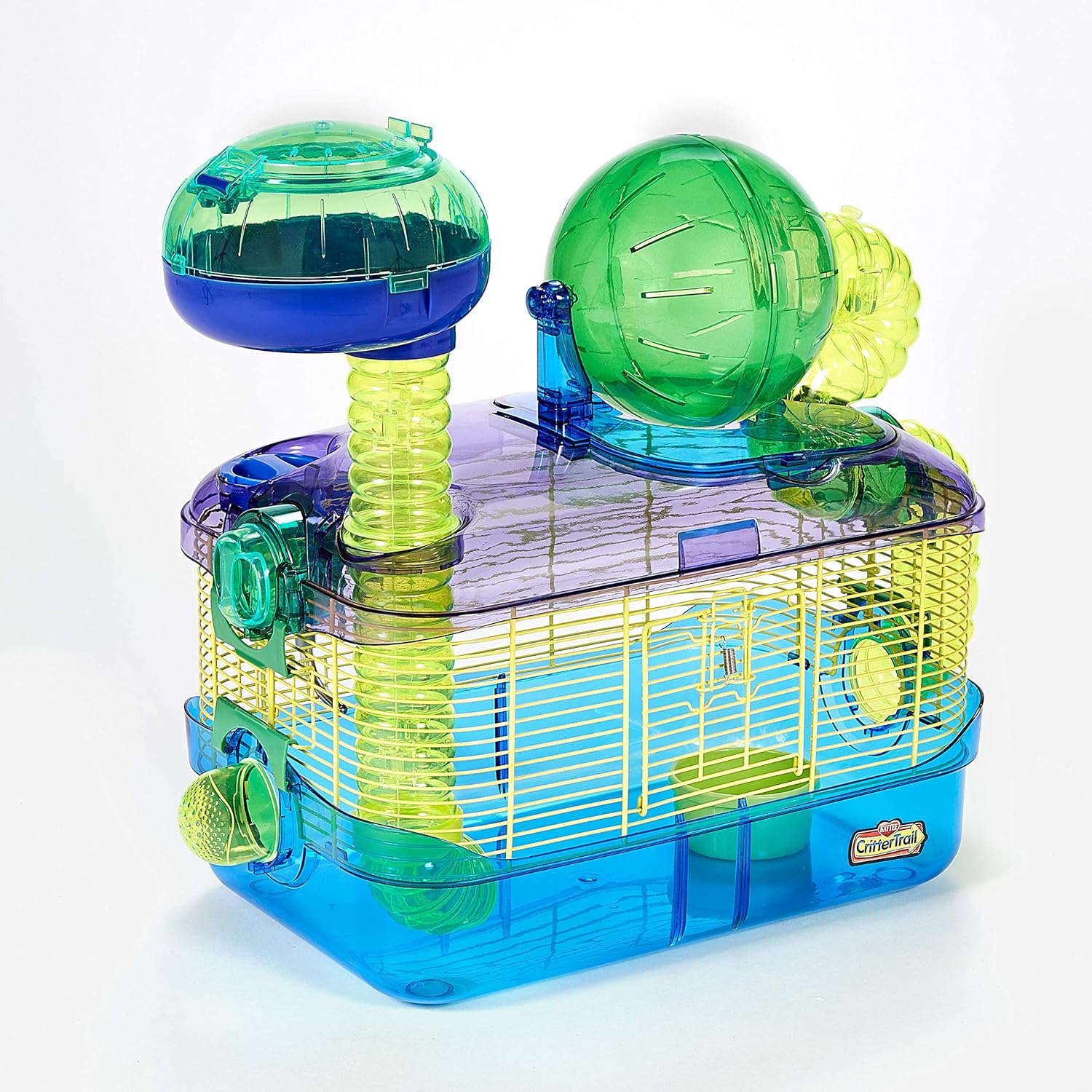If you’re new to hamster ownership, welcome to the world of furry, pocket-sized companionship! Hamsters make fantastic pets, but like all animals, they require proper care to thrive. In this Hamster Care Guide, we’ll walk you through the essentials of their care, from setting up a habitat to ensuring their health and happiness.
Chapter 1: Different Hamsters
Before you bring home your new furry friend, it’s crucial to understand the distinctions between the two primary groups of hamsters: Syrian Hamsters and Dwarf Hamsters:
- Syrian Hamsters: Syrian hamsters, also known as golden hamsters, are the larger and more solitary of the two groups. These charming creatures are a great choice if you prefer to have a single hamster as your companion. Due to their solitary nature, Syrian hamsters should be housed alone in their cages to avoid territorial conflicts. Their larger size makes them more robust and easier to handle, which can be ideal for families with children or those new to hamster ownership.
- Dwarf Hamsters: Dwarf hamsters encompass various species, including the Roborovski, Campbell’s, and Winter White hamsters, known for their smaller size and lively disposition. Unlike Syrian hamsters, dwarf hamsters can be housed in pairs or small groups, but they may have more energy and require a bit more space. Their social nature makes them entertaining to observe, as they engage in playful interactions within their groups. However, it’s crucial to ensure that the group dynamics are harmonious, and you should be prepared to separate them if any conflicts arise.
Chapter 2: Setting Up the Perfect Hamster Habitat
Creating an ideal environment for your hamster is essential for their well-being and happiness.
- Cage Selection: Choosing the right cage is a fundamental step in providing a comfortable home for your hamster. Opt for a spacious cage that allows them to move and explore. Proper ventilation is crucial to ensure a constant flow of fresh air. Look for cages with secure latches to prevent any accidental escapes. A great example of a suitable cage is this one, which offers ample space, includes numerous tunnels for exploration and comes with other hamster accessories to keep your pet engaged.

- Bedding: Providing quality bedding is essential for your hamster’s comfort and the prevention of respiratory issues. Select soft, dust-free bedding for your hamster’s habitat. The bedding material should be absorbent, comfortable, and safe for your pet to burrow and nest in. If you need guidance on choosing the right bedding material, you can refer to our detailed guide on this topic to make an informed choice.
- Accessories: Enrich your hamster’s living space with a variety of accessories to ensure their mental and physical stimulation. Include exercise wheels for physical activity, tunnels for exploration, hideaways for privacy, and chew toys for dental health. These additions to your hamster’s habitat offer both entertainment and exercise, contributing to a happy and content pet.
Chapter 3: Proper Nutrition and Feeding
Your hamster’s diet is crucial for their health:
- Hamster Diet: A nutritious diet is a cornerstone of good hamster care. Provide your hamster with a balanced diet consisting of commercial hamster pellets as the primary source of nutrition. These pellets contain essential nutrients to meet your pet’s dietary requirements. Additionally, offer fresh vegetables as a supplementary food source, and consider occasional treats as rewards for good behavior. Offering a variety of foods ensures your hamster receives a range of nutrients, helping maintain their health and overall well-being.
- Fresh Water: Hydration is as crucial for hamsters as it is for any living creature. Ensure your hamster always has access to clean, fresh water. A water bottle with a sipper tube is the most practical and hygienic way to provide water. Make a habit of checking the water supply daily and refilling it as needed to keep your pet well-hydrated.
Chapter 4: Health and Wellness
Keeping your hamster healthy is a top priority:
- Regular Checkups: Schedule regular visits to a veterinarian who specializes in small animals, particularly hamsters. These routine checkups allow for early detection of any health issues and ensure your pet receives proper care when needed. Vaccinations may not be necessary for hamsters, but a veterinarian can provide guidance on health and wellness.
- Hygiene: Maintaining a clean living environment for your hamster is essential for their health and happiness. Regularly clean the cage, removing soiled bedding and waste. Provide sand baths for grooming to help keep your pet’s fur clean and healthy. For more detailed instructions on cage cleaning, you can refer to our short article for expert tips and insights.
Chapter 5: Enrichment and Exercise
We continue our hamster care guide with stimulation, and that is something hamsters can receive in different variations:
- Exercise: Incorporate exercise into your hamster’s daily routine. Allow them to explore outside their cage in a hamster ball, a safe and enclosed environment that prevents accidents. There are many hamster ball options available, but one of our favorites is this one due to its quality and durability. It’s essential to supervise your hamster while they’re in the ball to ensure their safety.

- Toys and Playtime: Provide your hamster with a variety of toys to keep them mentally and physically active. Interact with your pet during playtime sessions, offering them stimulation and companionship. If you’re looking for ideas and recommendations for cool toys, you can check out our short article for inspiration.
Chapter 6: Bonding and Interaction
Building a bond with your hamster takes time and patience:
- Handling: Gradually introduce your hamster to handling and gain their trust. Start with short sessions and gradually extend the duration. This gradual approach helps your pet become accustomed to human interaction and reduces stress. For tips on hamster taming, you can find helpful insights in our short article.
- Socialization: Connect with other hamster enthusiasts, whether through online communities, local clubs, or friends who also own hamsters. Sharing experiences, tips, and advice with fellow hamster lovers can be valuable in providing the best care for your pet. Socialization helps you access a supportive network of hamster owners who understand the unique joys and challenges of caring for these wonderful pets.
Hamster Care Guide Conclusion
By following this hamster care guide, you’ll be well on your way to providing a happy and healthy life for your new furry friend. Remember that every hamster is unique, so be attentive to their individual needs and preferences.









